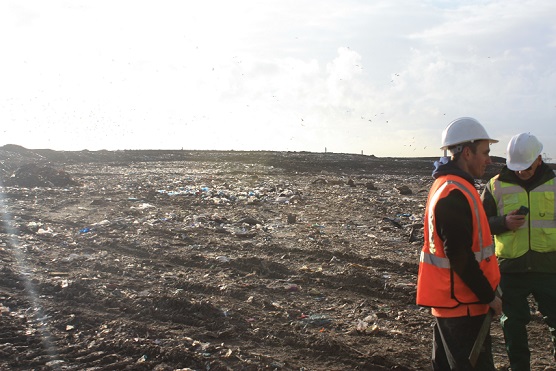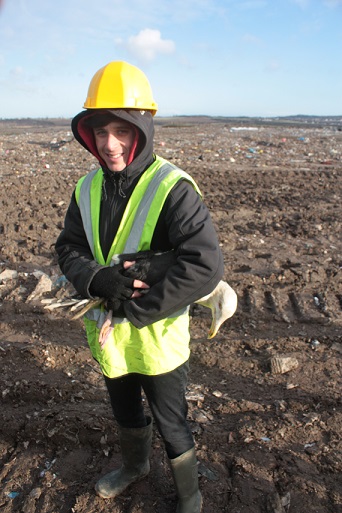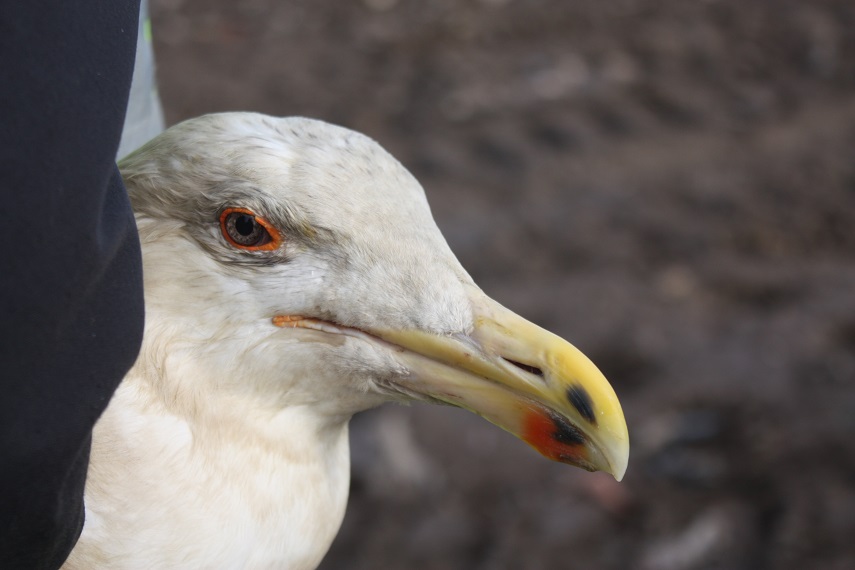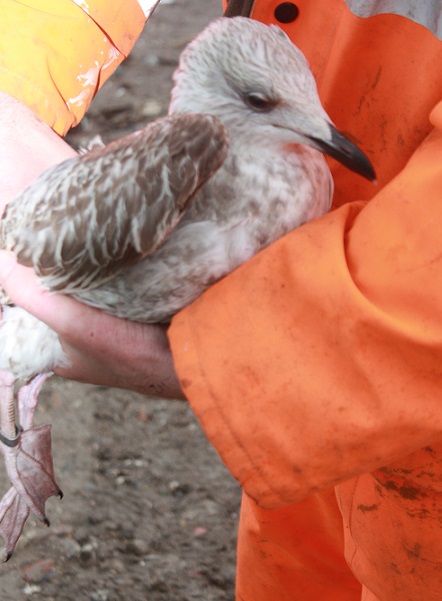Every now and again it is refreshing to have a major change to your ringing routine. Over the last couple of years I have had several trips out with the Wash Wader Group, a couple with the Wildfowl and Wetlands Trust and several with the North Thames Gull Group. They all catch their birds primarily using cannon nets. They probably should be called "mortar nets" as the net is propelled by four mortars. Today, Jonny and I went on the 275 mile round trip to the Pitsea Landfill Site to work with the NTGG. We arrived at 7:30 and were on the site by 8:30, with the cannon nets ready to fire soon afterwards. As you can see from the photograph below, the immediate landscape is pretty bleak, but it overlooks the Thames Estuary, which is somewhat nicer to look at

The gulls have become habituated to following the heavy machinery that compacts the rubbish into the landfill and then staying around to feed on the newly compacted rubbish. A truck load of rubbish is emptied in front of the net and the compacting machine runs backwards and forwards over it, which piques the gulls' interest. It then moves away and the gull settle down to pick through the rubbish for edible scraps. Usually we wait for an hour or more before there are suitable numbers of birds to warrant firing the net. Today, it was ten minutes.
The first catch was just under 100 birds: mainly Black-headed Gulls, but including a good number of Common and Herring Gulls, plus a couple of Great Black-Backed and one Lesser Black-backed Gull. All birds processed were identified and aged, fitted with a BTO metal ring on the right leg and a numbered colour ring on the left, and their maximum primary length and their head and bill length measured. Jonny got to ring his first Common, Great Black-backed and Herring Gull - so I suspect he thought it worthwhile.


We had reset the cannon net before starting to process the first catch: and it was fired for a second time just as the last couple of birds were being processed. This was a much bigger catch: approximately 250 birds. This time we had the same mix as before, but with no Great Black-backed, but with one intriguing bird: a potential Herring x Caspian Gull hybrid, shown below.

This was a cause for considerable debate amongst the highly knowledgeable regular team but I would not profess to be any sort of expert, and certainly don't have an opinion on it. However, the whole Herring Gull / Lesser Black-backed Gull ring species seems to be being split on a regular basis: 20 years ago would anybody have actually considered the provenance?
We had hoped to go for a third firing but the birds just disappeared. However, it was certainly the most compact and effective gull ringing session I have been on. Gulls are facing a considerable pressure these days: from compost. So much food waste is now being composted that there is much less food in the rubbish dumped in the landfill. Therefore, there is much less food for the gulls. This is reducing the number of birds on the tip and, clearly, stressing the gull populations. One result is, possibly, resulting in their moving more into towns and cities more often: where human feeding habits and discarding of same offers better feeding opportunities. ST/JC
